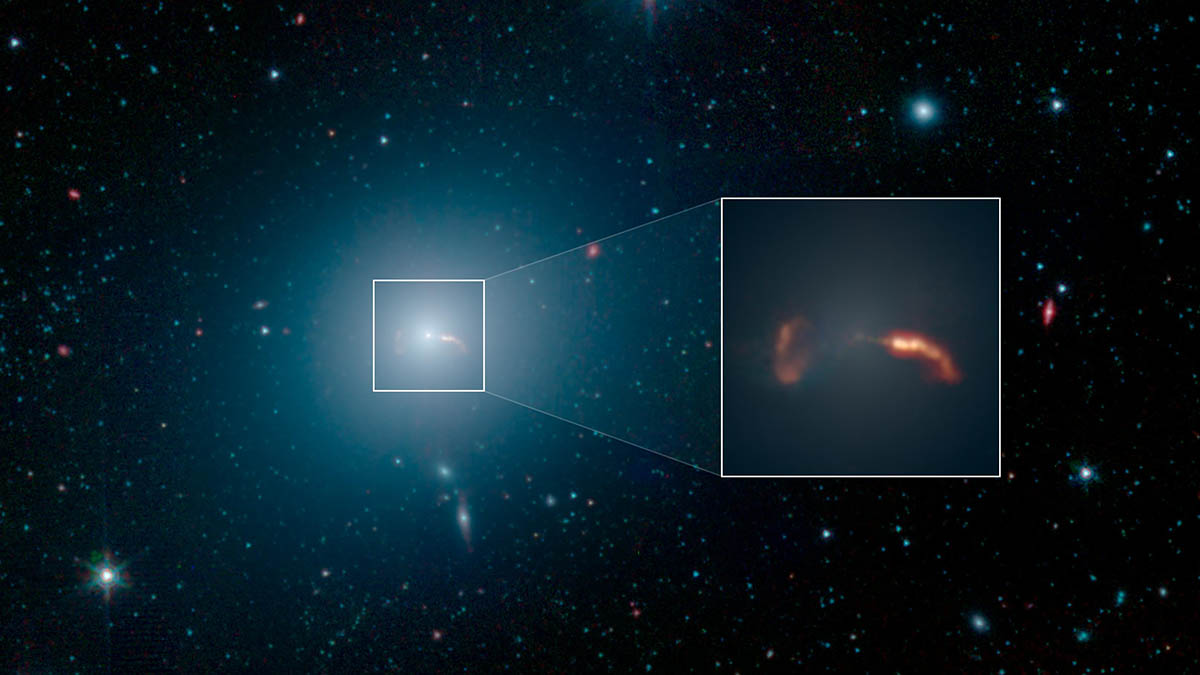The galaxy M87, imaged here by NASA’s Spitzer Space Telescope, is home to a supermassive black hole that spews two jets of material out into space at nearly the speed of light. The inset shows a close-up view of the shockwaves created by the two jets. (NASA/JPL-Caltech/IPAC)
Home The galaxy M87, imaged here by NASA’s Spitzer Space Telescope, is home to a supermassive black hole that spews two jets of material out into space at nearly the speed of light. The inset shows a close-up view of the shockwaves created by the two jets. (NASA/JPL-Caltech/IPAC) The galaxy M87, imaged here by NASA's Spitzer Space Telescope, is home to a supermassive black hole that spews two jets of material out into space at nearly the speed of light. The inset shows a close-up view of the shockwaves created by the two jets. (NASA/JPL-Caltech/IPAC)



